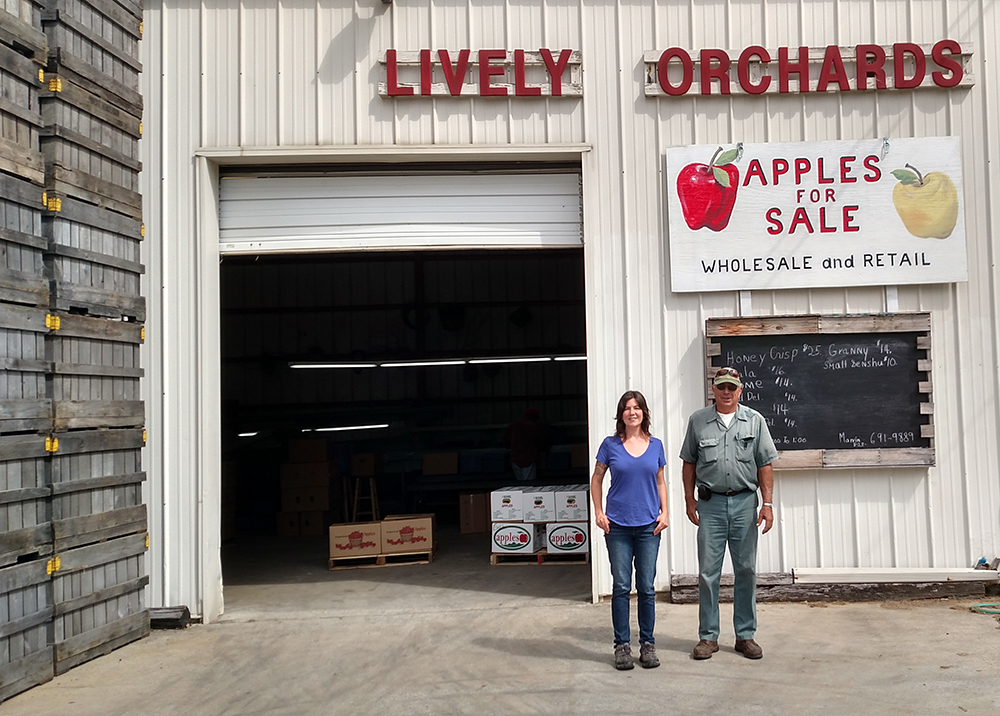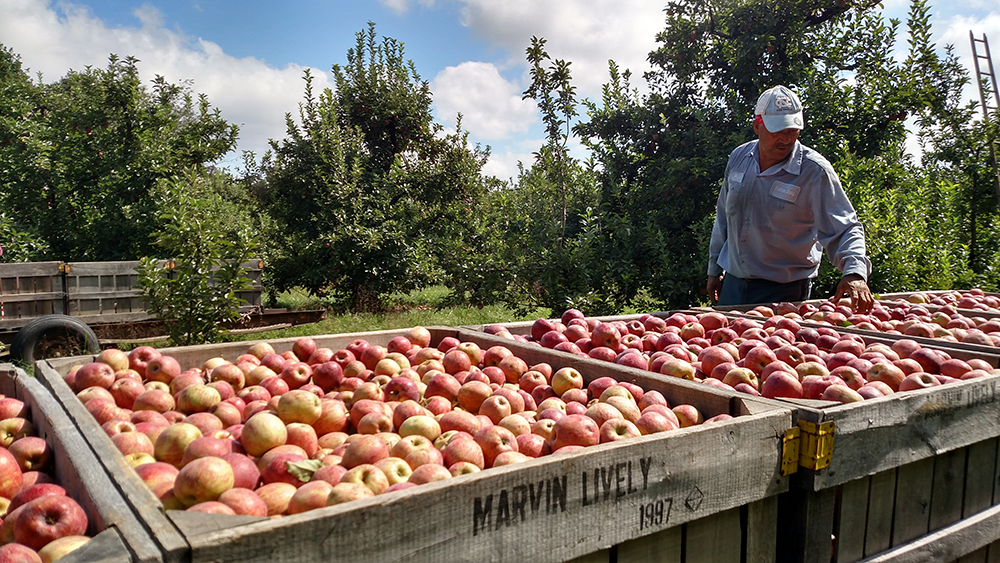By Carolyn Twesten, Weaver Street Market Produce Merchandiser

Having grown up in New York State, I know that the best tasting apple is the one that’s plucked direct from the tree. Unfortunately that isn’t always an option in the North Carolina Piedmont. Many apples require a certain “chilling period,” a number of days below a certain winter temperature. And generally speaking, many apple varieties don’t appreciate our hot, humid summers (and can we blame them?!). Luckily for us, North Carolina is a state of diverse growing regions. Henderson County in the mountains is the top apple growing region in the state, growing 65 percent of the state’s apple crop. We now have many varieties arriving weekly from Lively Orchards in Flat Rock, NC, and I recently had the privilege of visiting with orchardist Marvin Lively.
Marvin Lively is a second generation farmer. His father started out growing “row crops” as he called them, mostly cabbages. Cabbages were his favorite crop to grow, but after many years he was no longer able to perform the back-breaking labor of planting, stooping, cutting, and packing. Apples seemed an ideal option as he could mostly tend the trees standing up. Marvin took to his father’s apples, purchased his own piece of property, and started planting trees in the 1960s. He now owns 50 acres of apple trees in close to a dozen varieties, and hopes to harvest 1000 bushels per acre. The trees begin bearing about five years after planting and will bear for up to 25 years. He says that new varieties come around faster than his older trees peter out, as breeders are developing fruit that ripens earlier, stores better, or has more vivid coloration.

Marvin talks of his struggle to compete with large, West Coast farms that have big money invested into new varieties, state of the art equipment, and the capability to market fruit via online sales to large distributors. Southern growers also have far more pest and disease issues to deal with. He works with the NCSU Mountain Research Center to use safer and fewer pesticides and to introduce non-chemical pest reduction methods into his production. For example, he uses pheromone traps which sterilize one of his main pests, the codling moth, to reduce their population year over year.
Another concern for Marvin and many other farmers and orchardists is that at 68 he is reaching retirement age with no children or grandchildren to hand over his legacy as an orchardist to. As the average age of the local orchardist increases, so have land prices for desirable vacation home sites. The number of orchards has fallen from its peak of around 350 in the 1960s and 70s to about 150 today.
 During my visit with Marvin he also told me that the process of produce buying has changed. Buyers once visited with the farmers and inspected the products they were buying. Now, especially in a globalized market, much produce buying is done online with two or more middlemen involved. I was proud to carry on the time honored tradition of actually visiting our grower and viewing his operation. I told him how much Weaver Street Market values our local producers and how much our customers love his apples, and how important his work is to us. I hope that Marvin and his fellow orchardists are able to hand down their land to someone who will continue their legacy. Because I for one love our North Carolina apples.
During my visit with Marvin he also told me that the process of produce buying has changed. Buyers once visited with the farmers and inspected the products they were buying. Now, especially in a globalized market, much produce buying is done online with two or more middlemen involved. I was proud to carry on the time honored tradition of actually visiting our grower and viewing his operation. I told him how much Weaver Street Market values our local producers and how much our customers love his apples, and how important his work is to us. I hope that Marvin and his fellow orchardists are able to hand down their land to someone who will continue their legacy. Because I for one love our North Carolina apples.